From urban farming to forest bathing, there has been a growing desire to connect with the natural world. In an effort to bring nature to urban settings, some landscape architects are turning away from conventional horticultural practices, where plants are organized in orderly rows and treated as separate, distinct clumps, in favor of a freer aesthetic that reflects the wildness of nature and is attuned to ecology. During her presentation at the Land8x8 Lightning Talks in Austin, TX, Jennifer Orr, a founding principal of Studio Balcones, discussed the importance of designing “wild” landscapes in the public realm to help restore ecological diversity in urban settings. Orr advocates for crafting landscapes that work with nature instead of trying to control it. This plant-driven approach for public landscapes aims to reconnect people with larger natural systems.
To achieve the performance goals of today, plants must do a whole lot more than just be ornamental. They must provide wildlife habitat and food, filter stormwater runoff, support biodiversity, enrich soils, cleanse air, reduce the heat island effect, and improve mental health WHILE making spaces more beautiful. Achieving these broader ecological goals requires an understanding of how plants fit together. Naturalistic design takes cues from nature, organizing plants the way nature does, in richly layered, diverse communities. Plants are fit together in ecological combinations and arranged in an intermingled style, bleeding into each other. This plant-rich design approach yields multi-purpose, beautiful landscapes that support biodiversity.
Orr is not the only landscape architect calling for a revolution in planting design. The naturalistic movement originated in the Netherlands over 30 years ago, with famous garden designer Piet Oudolf at the forefront of the movement. More recently, projects like the High Line in New York City and Chicago’s Laurie Garden (both designed in collaboration with Piet Oudolf) have brought this type of planting aesthetic to urban environments, launching the public awareness and popularity of naturalistic planting design. Intended to be ever-changing, dynamic, and emotion-laden landscapes, these places make us reconsider the role of landscapes in public spaces.
As described by Tony Spencer in an article on his blog, The New Perennialist, naturalistic plantings are composed of a series of interwoven plant layers together forming a community, abstracting the patterns and relationships found in nature. He writes: “Particular attention is paid to how each plant grows from the roots on down—whether it clumps or runs, and how well it responds to stress and competition. Every detail of a given plant’s habit provides a clue into how well it plays with others and what ecological niches it can fill”.
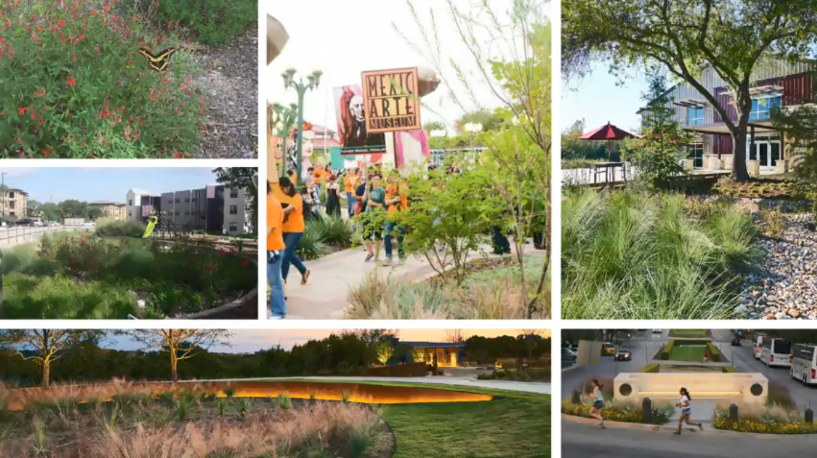
Image: Studio Balcones
Mastering this art requires a deep horticultural knowledge and an understanding of the intricate relationships between plants. Fortunately, as popularity grows, so too have resources and publications to master this design aesthetic, including Nigel Dunnett’s Naturalistic Planting Design: The Essential Guide (2019), Claudia West and Thomas Rainer’s book Planting in a Post-Wild World: Designing Plant Communities for Resilient Landscapes (2016), and Wild by Design: Strategies for Creating Life-Enhancing Landscapes (2016) by Margie Ruddick.
So, how can we actualize the power of plants to more effectively drive ecological function in our towns and cities? In urban environments, where space is at a premium, Orr suggests “plant stuffing”, or planting as many plants in as many spaces as possible, to underscore the importance of plant layering and variety.
This type of “wild” planting design is often perceived as messy or formless, leading to concerns over maintenance. Orr asserts that we should embrace the messiness of nature, while also understanding that there is a right balance to strike in naturalistic planting design. Designs should interpret nature, but also be legible. To achieve this balance, selecting the right plants – plants that are adapted to the soil and climate of a specific site – is key. If done correctly, this planting approach actually requires less labor over time, avoiding the typical maintenance burdens of watering, mulching, spraying, and pruning.
Orr encourages designers to experiment with the naturalistic planting style, see what examples of best practices are out there, and discover the beauty of gardening in a naturalistic style. By harnessing the power of plants, we as landscape architects are able to create resilient, memorable, and vibrant landscapes.
—
This video was filmed on June 25, 2019 in Austin, TX as part of the Land8x8 Lightning Talks sponsored by Anova Furnishings.




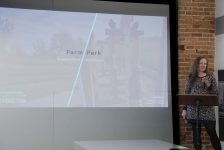
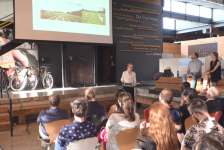


![Conflict Wood [Video]](https://land8.com/wp-content/uploads/2021/07/land8-cover-ipe-land8x8-zac-tolbert-224x150.png)
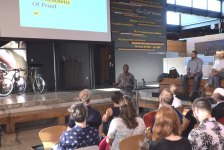

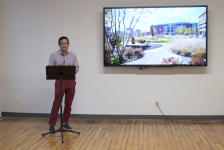
Roger the Shrubber
The Bane of the Municipal Gardener – The Perennial Lack of Support and Professional Elitism:
I am currently a landscape architect and have been a gardener, landscaper, designer and nurseryperson with 38 years overall experience in the landscape industry, spending the last 17 years in municipal operations with a large university. I am embedded in the operations unit of this university (place-keeping), while my counterpart, our campus landscape architect, is embedded in the planning department and directs the design and development of our urban realm (place-making). We have differing perspectives, but are finding our way to better collaborate on approaches to planting that advance our university’s goals around sustainability, urban forest management, biodiversity and climate-change-resilience, and are struggling with how to respond to the challenges of long term stewardship and how to work around restrictive operational budgets. We also have good fortune of collaborating with a great diversity of university staff, stakeholders, and faculty and students working on research related to biodiversity and urban forest management. However, with respect to my colleagues at the university, the following views and comments are exclusively based on my own personal experience and viewpoint.
With that brief backgrounder, I have to say I am very upset by certain aspects of this presentation have more than few comments…
I am sad to see there is often a dark chasm between landscape architects and municipal maintenance staff and gardeners in particular. At its best there is mutual respect, and the ability to co-design based on the aspirations of landscape design (place-making) and the realities of long term gardening stewardship (place keeping). At its worst, there in an insidious kind of smug elitism whereby landscape architects have a patronizing intolerance of “mere” gardeners and characterize them as lower-level participants that are uneducated, uncreative, resistant to change, un-cooperative and unsophisticated in design thinking, and whose only tools are a hedge-trimmer, blower or line-trimmer. (In case you doubt that there is chasm between gardeners and landscape architects in general, see: https://www.julianraxworthy.com/post/research-overgrown ).
Sadly the ubiquitous, pathological lack of investment in long-term stewardship of urban, municipal greenspaces, only serves to further muzzle the genuine skills and creativity of municipal gardeners, and forces them into the role of outdoor janitor. This only serves to further demoralize and segregate this group as a seeming obstruction to a more (apparently) progressive and sustainable approach to planting design. They are thus often overlooked and ignored by frustrated planners and designers of municipal landscapes. Therefore, urban development typically proceeds oblivious to calls for due consideration and support from these chronically under-resourced municipal stewards.
Subsequently, physical urban landscapes are emerging out of a segregated, high-brow, elitist realm of development, and many new landscapes may look stunning and functional in the short term, but fail the test of time. Designers and planners sign-off and praise themselves for creating unmaintainable, unsustainable projects that degrade over a few seasons because the municipal staff responsible for the care of their creations are under-resourced, are forced to make undesirable alterations, and the designers chose to ignore (or did not have the opportunity) to take the advice of the long-term stewards in favor of producing a high-minded overly complex landscape.
Lack of funding on operational budgets in municipalities is wide spread in North America and beyond. And this chronic deferral of landscape stewardship in favor of more pressing budget priorities (year after fiscal year) unfortunately leads to restricted operating budgets and to a poverty of means that gardeners are asked to shoulder. Therefore municipal gardeners have to resort to an over-dependence on mechanization and an ever-increasing forced-neglect of specific service zones, or specific horticultural aspects of their work scope in a desperate and futile attempt to manage too many priorities and an ever widening gap between the high priority and the abandoned. This only increases the frustration of gardeners, and the planners and designers of public space, and substantiates the gardener’s image as uncooperative, uncreative, lacking in skill and resistant to change. Not to mention that unaware clients and users of space are puzzled by the seemingly intentional neglect and wrongly target and characterize the gardeners as lazy public servants.
Although there is much good to be said about the progress in thinking about planting design in recent years – less formal rigor, more naturalistic, biodiverse and sustainable – and many beautiful and appropriate projects have been realized by landscape architects. However, this newly emerging Oudolfian approach to planting design has been marketed and adopted with the zeal of any shallow fashion trend, whereby the merits of this approach to intermingled meadows is lauded out in all its glory, while virtually ignoring its demerits, challenges or limitations. Numerous new projects are highlighted in magazines with their creators self-congratulating themselves or celebrated by their professional milieu, with no mention of the stewards having much involvement, or follow-up on the project’s performance after several seasons.
To be fair, the progenerators and followers of this approach (most noteworthy the pioneering Piet Oudolf) have made an awesome contribution to the world of planting and landscape design – and Oudolf in particular fully deserves boat-loads of accolades for his pains-taking, innovative, plant-mastery and the stunningly beautiful landscapes that have emerged all over the world as a result.
So, although I do not want to throw out the baby with the bathwater, I am deeply troubled and frustrated by this blindness and hubris of many landscape architects who gloss over the very real challenges of gardening with intermingled plantings, and the challenges of designing, maintaining and sustaining these landscapes in the context of public, intuitional and municipal spaces with their attendant limitations on budgets and labour resources.
I have made some calculations and have determined that our university crews are currently budgeted to provide about 1.07-1.8 minutes of service per m2 of landscaped planting bed per year. By contrast, the new contemporary intermingled planting typology (we have some 300m2 of this style represented on campus), requires ~2.08 minutes per m2 per year – that’s 3.5 times more time consuming than the average campus planting. To put his in context, our campus is actually quite beautiful, with a wide range of many planting topologies, some very high service area and some very low naturalized or utility areas, which is covered by a mature urban forest canopy emerging over the course of history in response to changing ideas about landscape trends. Cumulatively, this landscape is a major component of this university’s brand, which is pictured on many promotional documents and drawing many students and faculty to live and study here. In spite of restrictive budgets, our crews have done an excellent job without anything remotely approaching the praise and glory heaped on the star designers of the profession.
However, as our university has developed aggressively over recent years, and invested in its public realm, it has not, invested proportionally in operational budgets – this is not unlike many similar institution and municipalities. Although not overly obvious to the casual eye, there has been a gradual decline in the quality of maintenance with its attendant decline in planted areas (more weeds, soil compaction, premature tree failure, drought stress, invasive species…) and what often leads in turn to an assumption of intentional neglect and a slowly evolving expression of the broken window syndrome.
Although I cannot stress strongly enough, the crux of the problem here is deferred maintenance, reduced operating budgets, which it turn demands a “low-maintenance” approach to design. Nonetheless, landscape architects and planners seem to prefer to stick their head in the sand (intentionally or otherwise), and proceed as if this elephant in the room can be ignored in favor of a more Pollyanna vison of a “sustainable” landscape. Sadly, this is just throwing fat on the fire, adding insult to injury! Landscape architects may cry foul, “it’s not my problem”, but continuing to ignore this persistent apparent restriction to “innovative” planting design, is underscoring that if you are not part of the solution, you are part of the problem.
This new “movement” of intermingled, informal, naturalist planting definitely has many benefits, but landscape and garden designers have grabbed onto it like a new fashion trend, extolling all the merits, with no discussions about the challenges or limitations. I have a copy of Oudolf and Kingsbury’s wonderful book Planting –A New Perspective, which arguably kick-started this new trend, but there’s scant mention of maintenance challenges within its pages (they should have least a whole chapter devoted to maintenance!). Also this approach is very complex and challenging to design skillfully, let alone to maintain these dynamic compositions in a municipal setting.
In the Land8 video linked above, Orr’s notion of “plant stuffing” is an obvious and zealous extension of this Oudolfian paradigm in planting, but she talks about how “rigorous a process” it was “dealing with” maintenance people, and how they had to keep “telling them” that the plants would not give them a “headache”. In this respect, I found her attitude somewhat naïve, subtly condescending and upsetting. Maybe the maintenance people were trying to tell her something!! And I doubt they are so resistant to change that they needed to hold onto boxwood and lawn with a kind of “death grip” as she characterizes it. This is condescending and pejorative in the way she exemplifies it and maybe any resistance they may have had comes from designers and planners trying to greenwash and design-over very real challenges in stewardship and bush brush any objections under the lawn (so to speak).
Furthermore, not to mention the decidedly shallow notion of “plant stuffing”- simple throwing as many plants in a space as possible. And without even a footnote to how incredibly challenging it is to design (with maintenance in mind) for the complex inter-relationships and competition that happens when trying to combine numerous plants with such diverse vigor and rooting characteristics. Incidentally, the space we have on our own university campus that is closely related to this new approach (with a few woody shrubs peppered in), has been edited and changed by our gardening crew to keep it more manageable, and the plants and plant relationships have been edited to be less of “a headache” to maintain. There is some wisdom in covering the bare soil to out-compete weeds, but clumping and rhizomatous plants with diverse rates of growth and vigor if planted arbitrarily with no careful and vigilant cultivation of the spaces between them, (seasonal dividing, re-spacing, the regular removal of unwanted volunteer species etc.), then it might as well be a planting over-run with weeds, or it will get out of control, be short lived, and will need to be replaced like any perennial border inadequately tended. How sustainable is that?
I am obviously upset and arguably overly sensitive to how gardeners and municipal crews are characterized in this video (and generally). However, like so many forms of discrimination, the comments are subtle, insidious, and all too easy for the person making these inferences to dismiss them as innocuous and unintentional. However, like any form of verbal discrimination the acid test is the effect on the listener, and not on the intentionality or unintentionality of the person delivering the message. I would like to call this out as similar to rankism, although I would lean towards identifying this as “professional elitism”. It goes without saying, I am myself quite capable of a wide range of discriminatory thoughts, attitudes and beliefs, as I think we all are, and no less need to be vigilant and self-critical (…am I out of line here, going too far with this critique… putting too many landscape and planning professionals in the same boat…?…quite likely).
Nonetheless, I am compelled to air this out…Also at issue here is the pejorative and insidious inferences that municipal managers and crews are too dump and resistant to change to understand the designer’s higher vision and must be patronizingly manipulated into adopting a scheme they may not be able to sustain. The landscape architect in the video points to the rows of boxwood and lawn behind her example of “plant stuffing” as an example of operational culture’s resistance to change, and an obsession with control (…as mentioned earlier, holding on to lawn and boxwood with kind of “death grip”).
There definitively is some truth in institutional resistance in light of the challenges of maintaining this new planting (in the context of ever-restrictive operating budgets), but I know it is not absolute resistance to change in principle. Landscape operators are desperate for workable solutions, and to be fair, also direct a fair share of angst towards their managers, and indirectly towards landscape architects who “don’t know about anything plants” (a very common theme. Nonetheless, their complaints don’t get much traction, and they might as well be talking under water. Also, many sympathetic municipal managers with their hearts in the right place (and reasonable appreciation for the nature of the work) are largely ineffective in making the fundamental changes at higher levels that would result in the requisite increase in resources so needed for a comprehensive long-term stewardship aligned with sustainability goals.
Although I oppose an indiscriminate application of the Oudolfian paradigm, I am neither suggesting a return to the sterile geometric, “low-maintenance”, masses that are the legacy of modernism. I would like to think that we can collaborate collectively to find contextual, site-specific solutions that are less stylistically self-indulgent, more diverse in form and biology, and incorporate the best of all that horticultural and design history has to offer (inclusive of this new approach with discretion) while also addressing the need for preserved, and enhanced biodiversity, addressing climate change, and advancing a more informal and naturalizing approach to planting. It is also my humble opinion that the latter approach would also align with our own university’s aspirations around sustainability (with a robust operational budget of course).
I offer this for your reflection. And if you managed to labor through this commentary, thank-you for your indulgence.